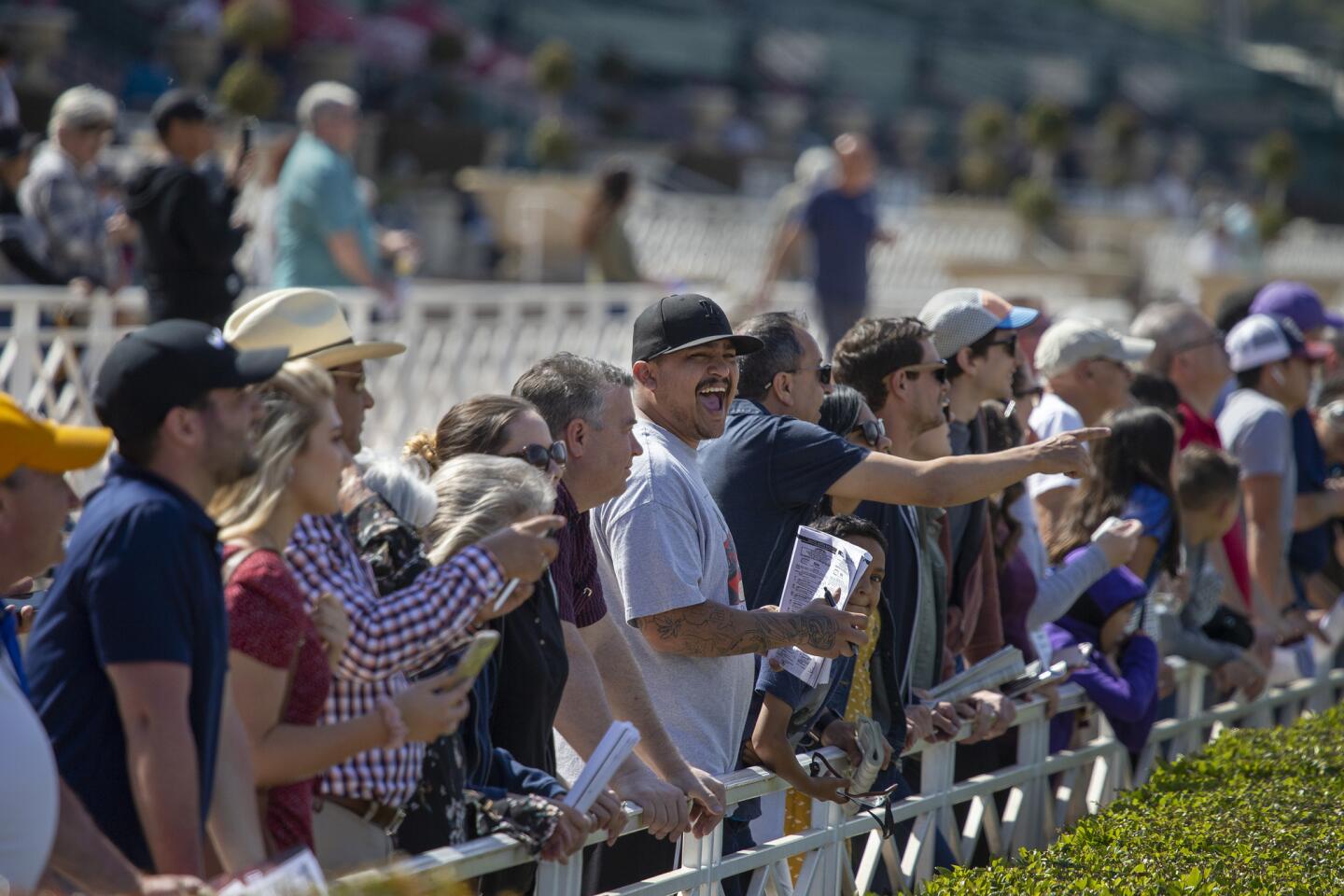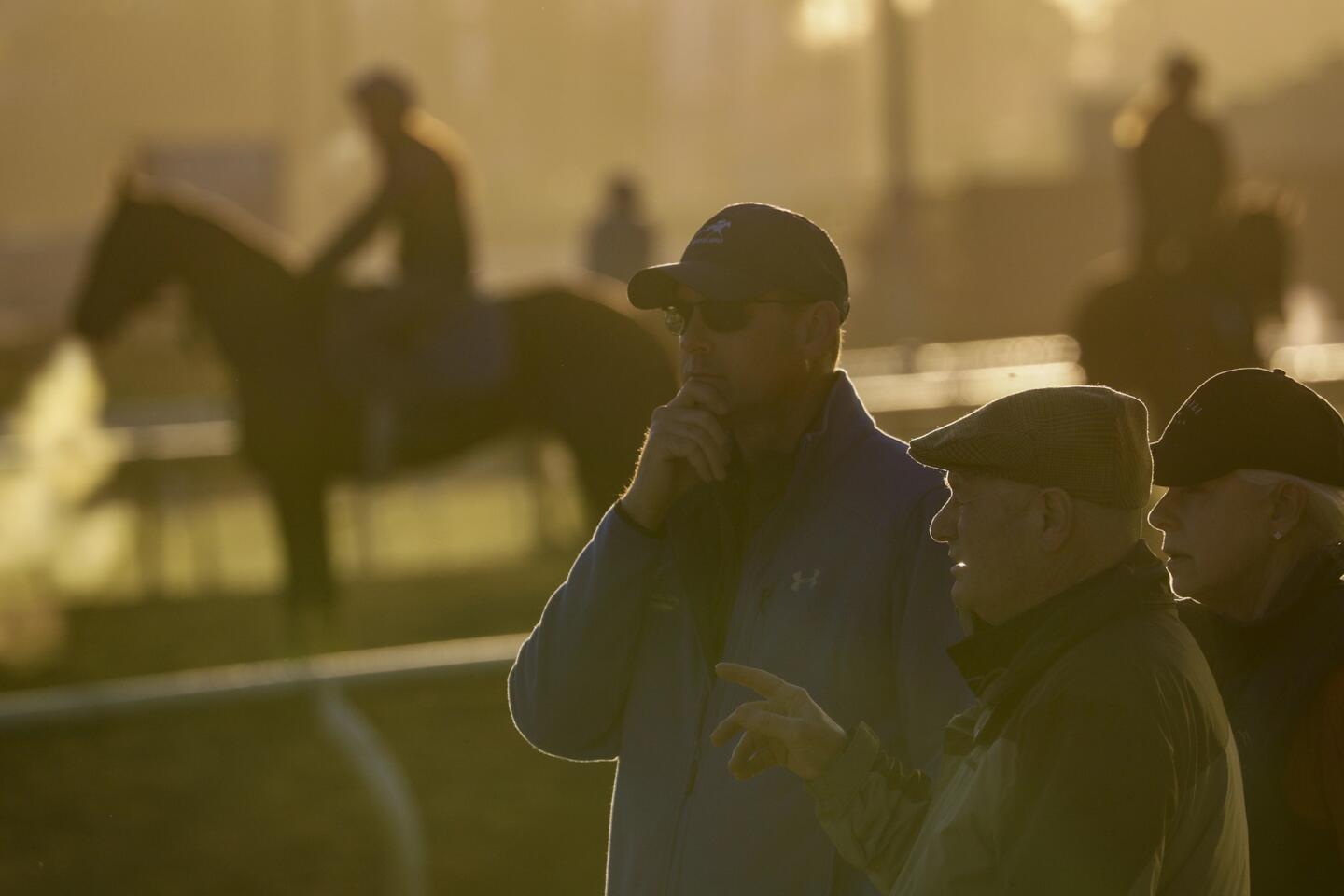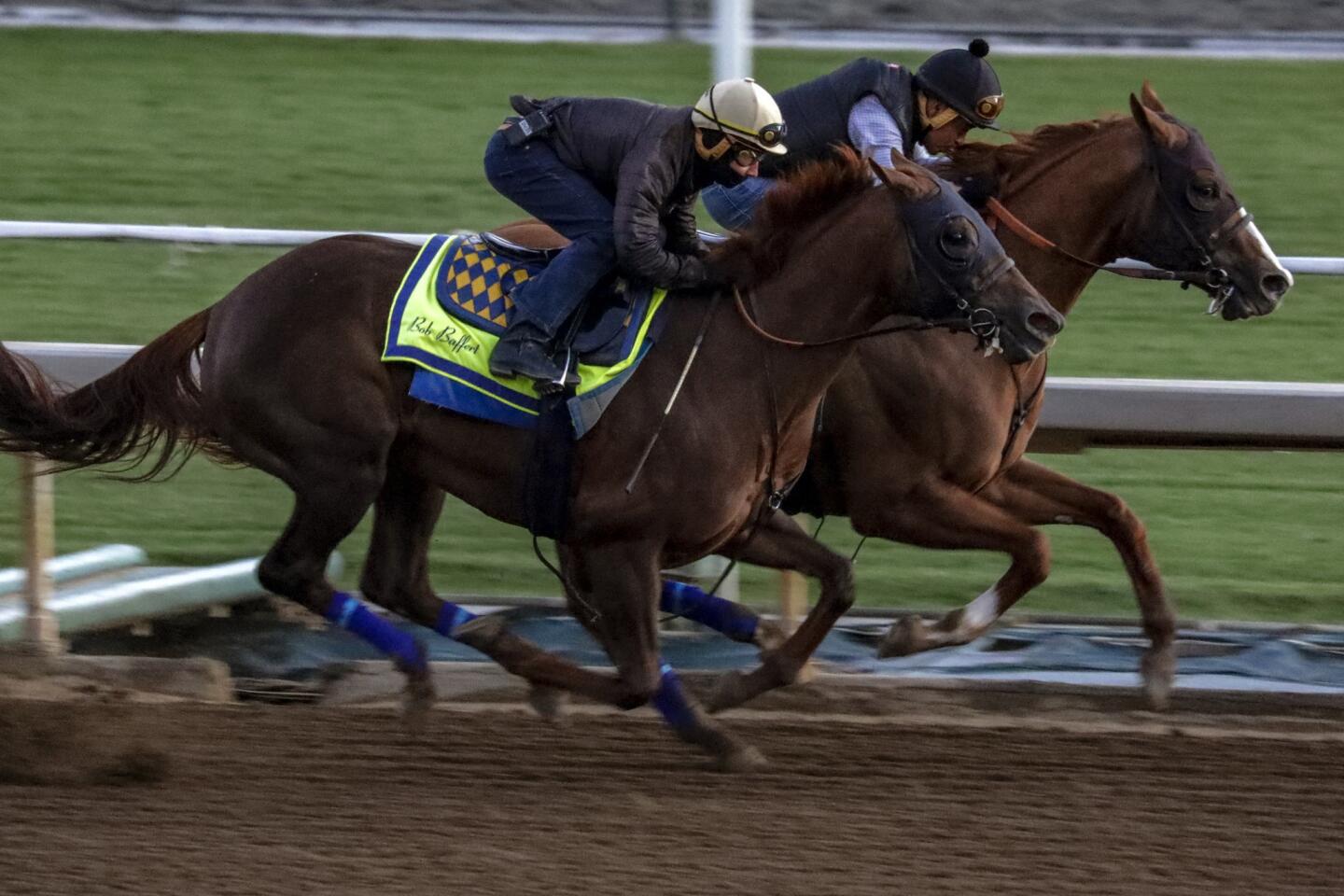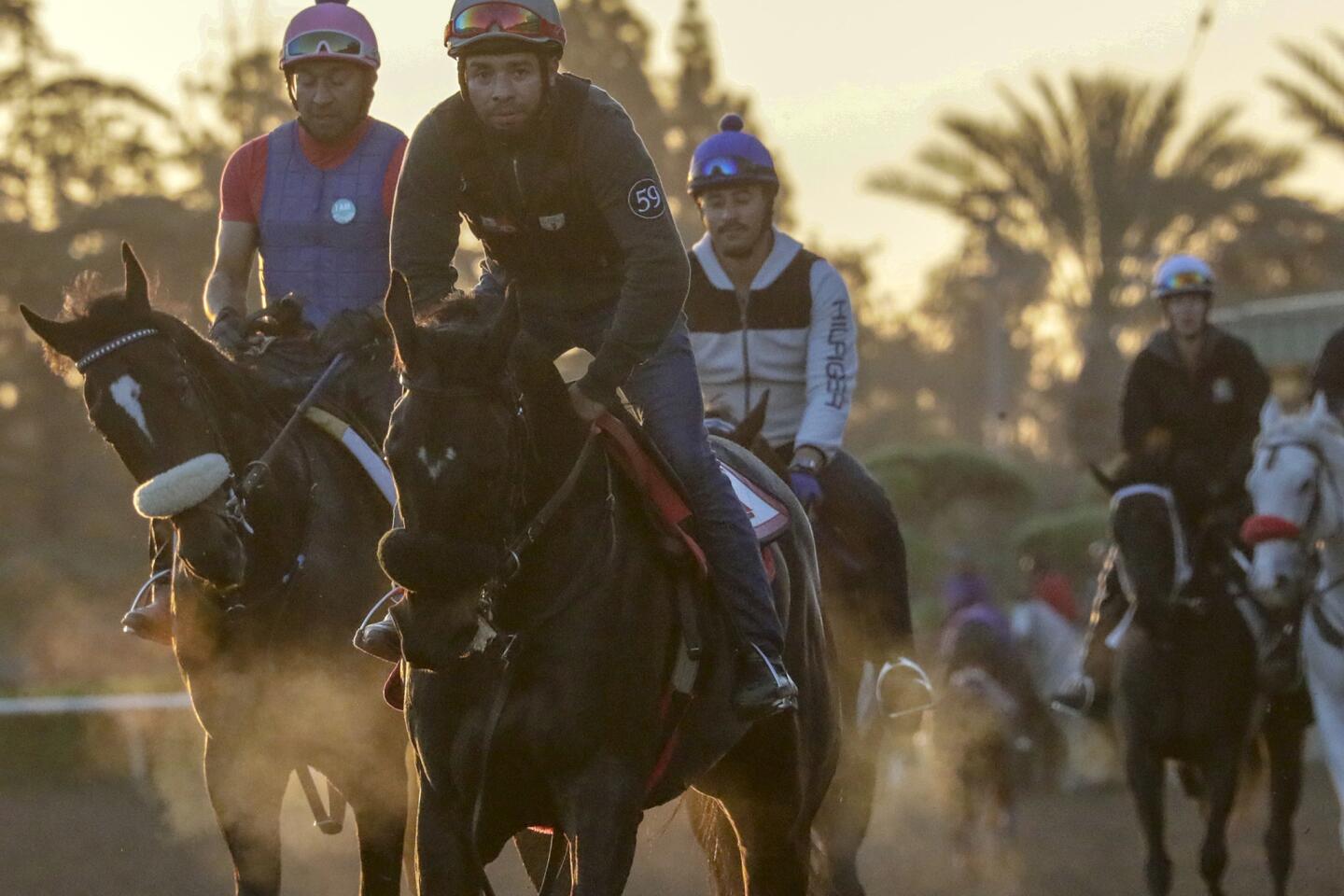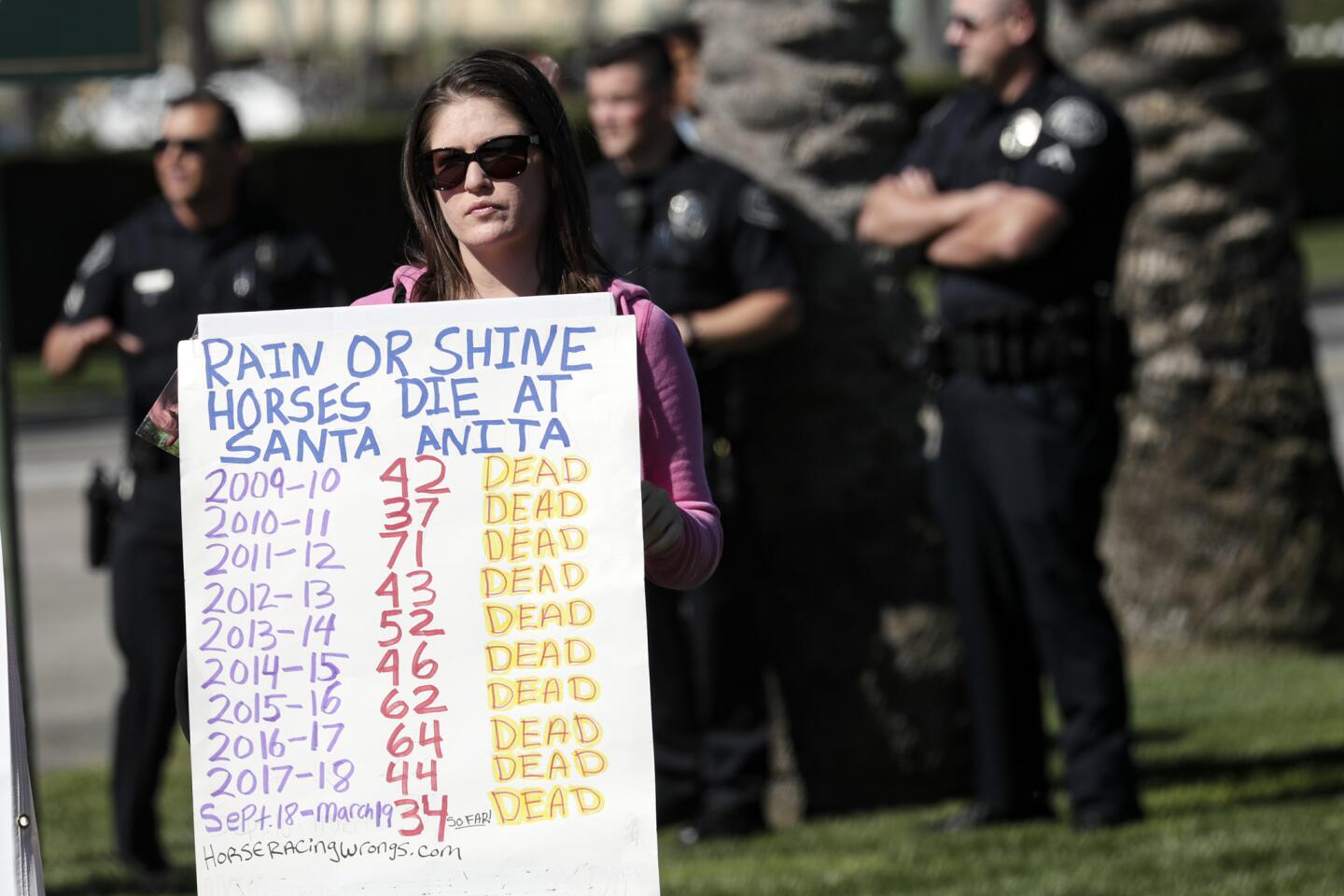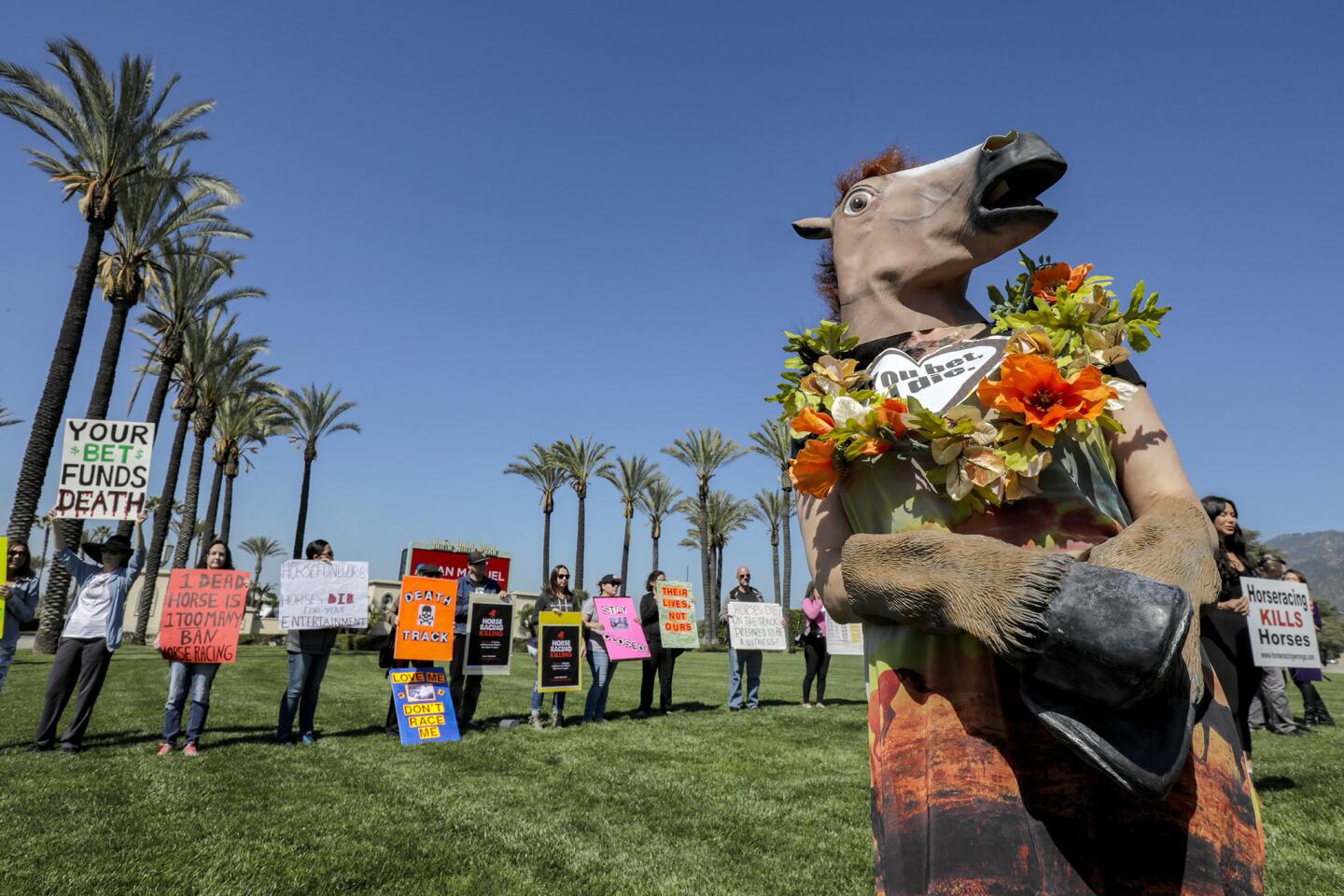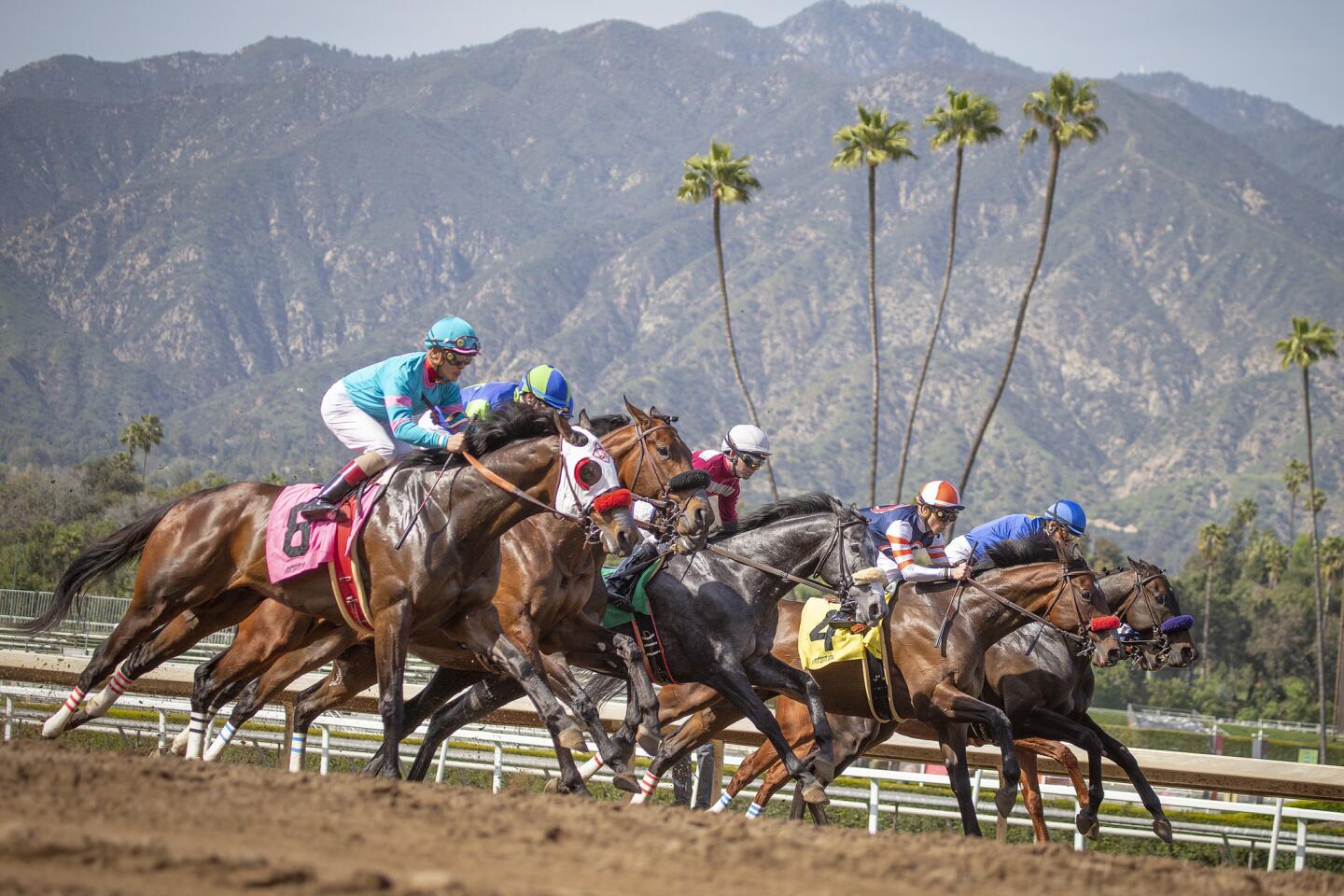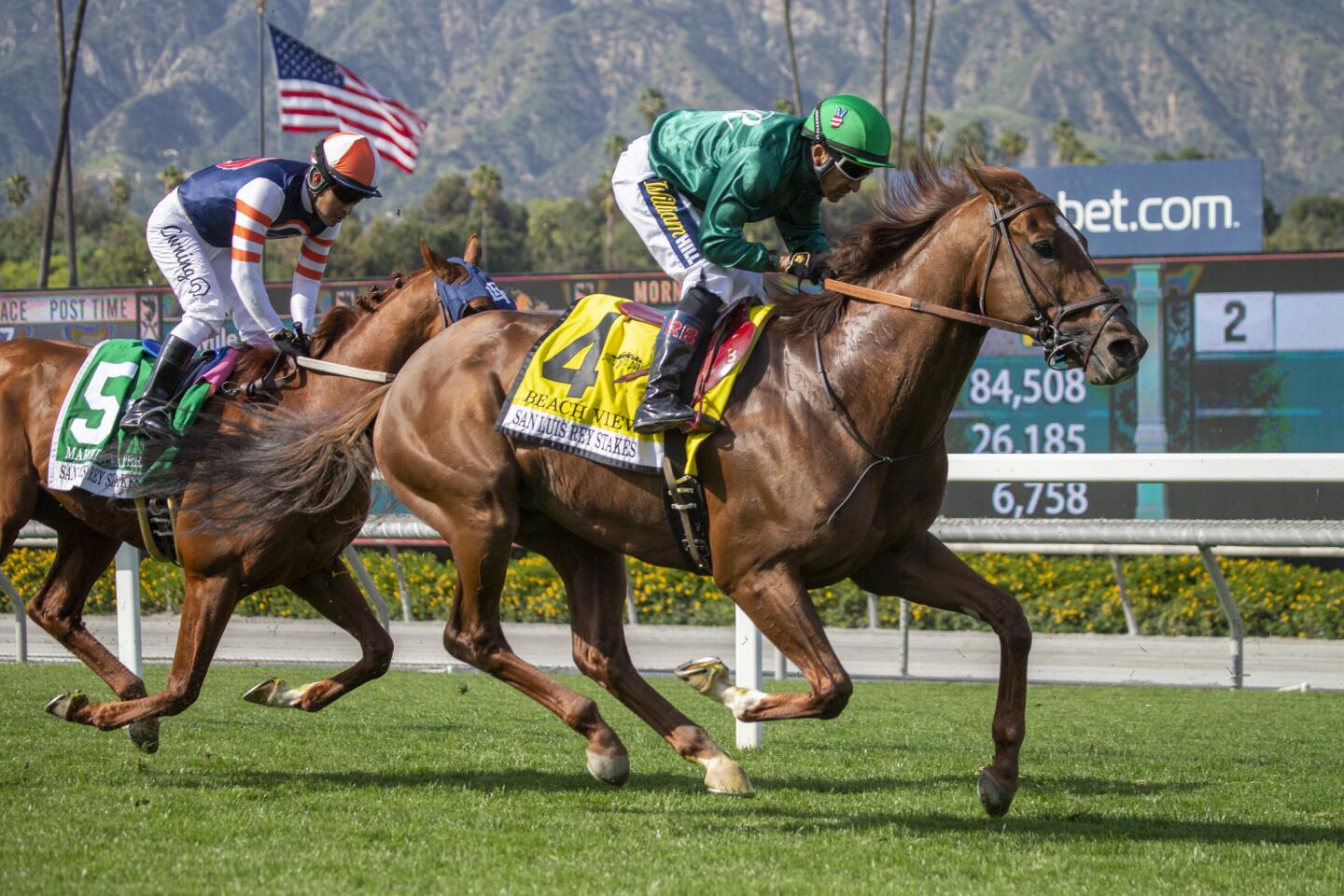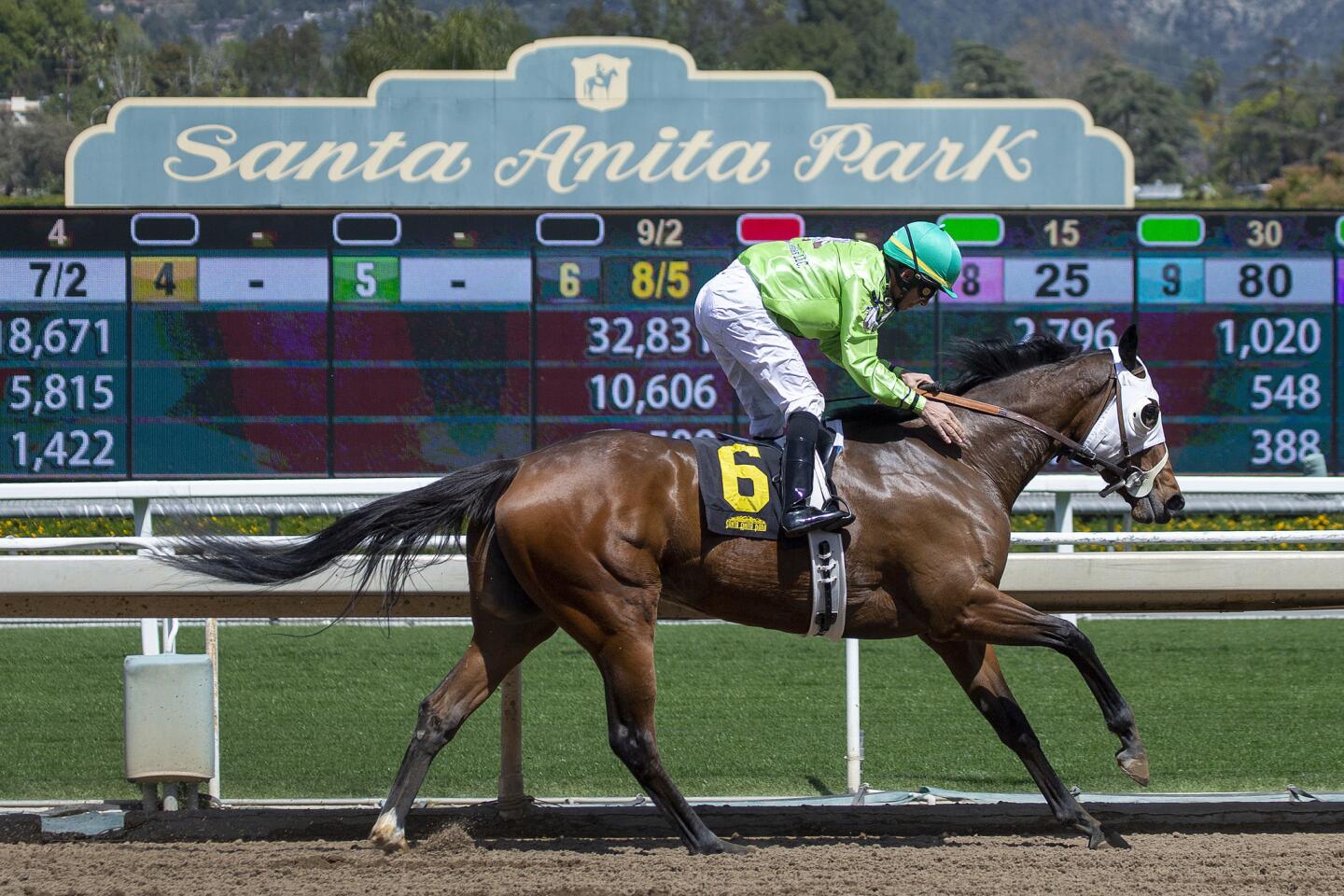Santa Anita reopens and finishes first day back with no horse deaths

Santa Anita racetrack is due to reopen Friday with new restrictions on whip use and medications. It’s uncertain whether the new rules will help stem a string of recent horse deaths at the track.
- Share via
Santa Anita on Friday concluded its first day of racing in about a month with no significant injuries to any of the horses. But uncertainty lies ahead for a sport that is desperately trying to embrace change or possibly face extinction.
Tim Ritvo, chief operating officer of the Stronach Group, owner of Santa Anita, is aware of the challenges that lie ahead. He hopes to convince the public, which does not necessarily think like the regular racegoers he calls customers, that the sport is headed toward positive reform.
“[The public are] the ones that go to Sacramento, and they are the ones that come out and vote and can end our sport,” Ritvo said. “There are more of them than there are customers, unfortunately. … [If there is ever a ballot initiative], the people who do want to end us will come out and vote in droves and the ones that don’t care just won’t show up at the ballot box.
“We need to do a really good job of getting into that outside bubble [of the public] and tell people the truth of how people really love and care for these horses.”
Track executives and the regular customers, of which there were 5,331 Friday, exhaled when the final horse crossed the finish line in the eighth and final race. The track had been shuttered for racing since March 3 amid fatalities that totaled 22 from when the meet opened Dec. 26.
Friday was the first day of new medication rules at the 85-year-old track. On Thursday, the California Horse Racing Board approved a measure proposed by Belinda Stronach, chief executive officer of the Stronach Group, that reduced and eventually will eliminate race-day medication including Lasix, a drug used to help horses who bleed from their lungs to breathe easier.
Another rule that was provisionally passed was eliminating use of the riding crop, or a whip, except in matters where a horse or jockey’s safety is involved.
This rule will take effect no earlier than October and possibly not until after Santa Anita hosts the Breeders’ Cup in November. The board approved it Thursday, but now the CHRB staff has to submit the proposed language. That should take two to three weeks. Then it goes to the Office of Administrative Law (OAL) for review.
“It can take a couple of months, but I don’t think it will this time because it’s an existing rule that mostly has deletions,” said Rick Baedeker, executive director of the CHRB. “We think probably 30 days to get sent and received back.”
That’s when a 45-day public comment period begins. After that, the board documents the comments and, when the calendar aligns, the rule will be voted on at the next meeting. If there are minor changes, it goes back for 15 more days of public comment; if major changes are suggested, then 45 days.
From there, it would go back to the board and then again to the OAL for final approval and an implementation date.
All of those moves could easily take until October, one month before the Breeders’ Cup, horse racing’s annual showcase. Baedeker said he didn’t know if the board would ask to have the date moved to after the worldwide event is held at Santa Anita. Craig Fravel, chief executive officer of the Breeders’ Cup, said he didn’t know if the group would ask the CHRB to extend the start date.
“The wheels turn slowly because you don’t want to make bad law,” Baedeker said.
Stronach’s vision for racing’s future did not include reinstating a synthetic track, even though those surfaces show significantly lower mortality rates.
“Statistically they are better, but there are other kind of injuries [such as soft tissue] people have told us,” Ritvo said. “But by getting to the [international] rules we should be able to bring those [fatality] numbers down even below synthetics. We are weighing the option of making our training track synthetic so the horsemen have options of synthetic, turf and dirt.”
On the first day back, the track showed a drop in handle from a comparable Friday in December. There was a 34% decline — from $9.8 million to $6.8 million — off of Dec. 28, when there was one more race than Friday.
Lost amid the attention to such details was the feature race of the day, the $200,000, 1 1/2-mile San Luis Rey Stakes on turf, which was won by Epical. The 4-year-old gelding is trained by Jim Cassidy, president of the California Thoroughbred Trainers, who has found himself in the middle of this crisis.
“It was extremely important [the day went well], Cassidy said. “There is no question. I would just hope that for the rest of the meet everything goes like this. Believe me, [management] is doing everything they can. They are going over the top with everything they could possibly do to prevent anything from happening. Thank God for that.”
Racing will return to the track Saturday and Sunday.
Sign up for our horse racing newsletter »
More to Read
Go beyond the scoreboard
Get the latest on L.A.'s teams in the daily Sports Report newsletter.
You may occasionally receive promotional content from the Los Angeles Times.


